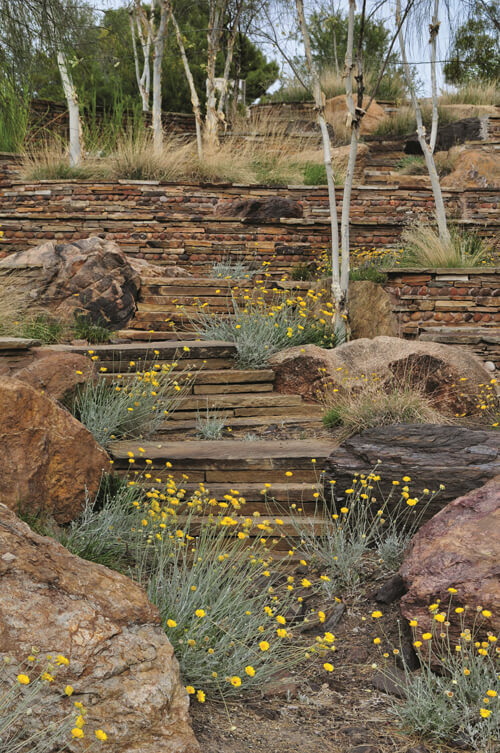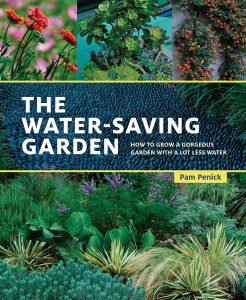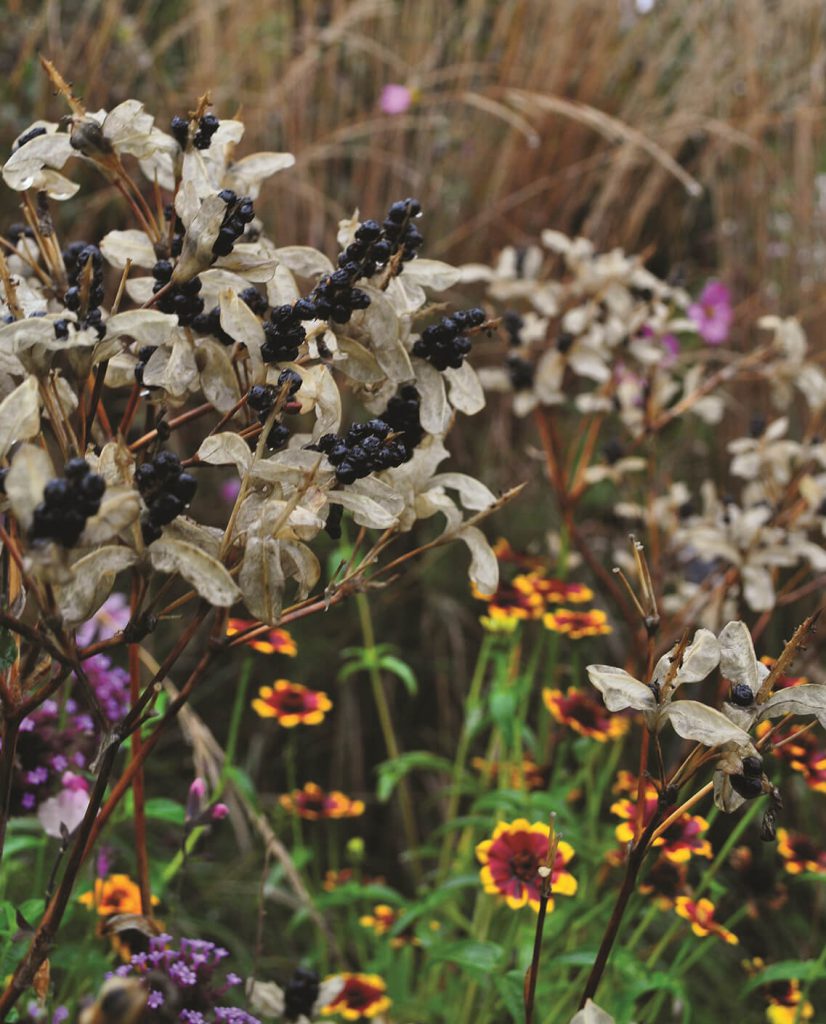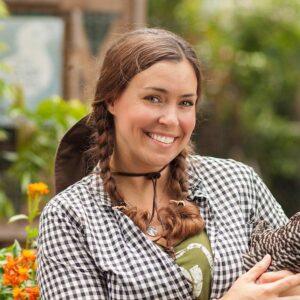Get the “real dirt” from the author and designer who literally wrote the book on Central Texas gardening.
Pam Penick is a gardening coach and mentor to people around the world, and lucky for us she lives and gardens in Austin, so her suggestions work very well for us here in south central Texas. She gives down n’ detailed answers to every question her readers ask, which is outstanding and appreciated by all of us.
Pam’s mentorship has meant so much to me and helped me immensely in my own personal garden. Her ability to take you along with her through great detail of do-it-yourself gardening projects is unmatched. Pam is a gardener’s gardener. I am honored and excited to be able to ask her a few questions, and share her answers with all of you.
Q: I read recently you were an editor before you stayed home to raise your children, and began your transformation into the Pam we all know and love today. What came first — your love of writing or your gardening obsession? How did this all begin for you?
A: I’ve always been a writer, but I didn’t think of myself as a “writer” until I’d been publishing my blog for a few years. After getting a master’s degree in English, I worked as an editor for a magazine in Chapel Hill, NC, and then for a publisher here in Austin before taking time off to raise my two kids. I started gardening because I wanted to make our yard prettier and more functional, and I could do it during their naps or while they played outside. It quickly became an obsession. I read everything I could about design, took design classes and studied gardens constantly. I also started reading gardening blogs, which were fairly new but wonderfully personal and interactive — and very different from most books and magazines that largely ignored our difficult climate!
In 2006 I started my own blog, Digging, in order to join the online gardening conversation, as well as to keep a record of what I was doing in my own garden. The blog attracted notice and led to writing assignments and a few photography sales. At the same time, it was my calling card for my growing garden design business.
Q: How do you continue to come up with fresh and interesting content that keeps us all wanting more on such a consistent basis?
A: Visiting gardens, talking with other gardeners, and reading books, magazines and blogs keeps me inspired; plus digging in my own garden. You never stop learning when you garden. No matter how long you’ve been plunking plants in the ground, you’re always, in some essential way, a beginner because nature isn’t static. It’s always teaching us something new.
Also, I love to photograph gardens, so I always take my camera (even just a cell phone camera) wherever I go. You never know when you’ll see something interesting in a garden on the other side of town as you’re driving by, or in a commercial landscape, or your friend’s back yard. I take a lot of photos, and then I’m inspired to write about what I’ve seen. Writing gives me the opportunity to really think about what I’ve seen — what’s cool about it, why it matters — and then share that with my readers.

Stone steps and terracing evoke a cascading waterfall. Photo credit: Pam Penick.
Q: What made you decide to start writing a book?
A: My publisher, Ten Speed Press, approached me with the idea of a lawn-alternative book, and it seemed like a perfect fit for what I’d been helping people with in my design business for so long. My clients were largely do-it-yourselfers who wanted ideas and a plan to follow as they converted sterile, water-hogging lawns into wildlife-friendly gardens filled with water-wise native and adapted plants. I drew on my own experience as a DIY-er in my garden to write “Lawn Gone,” sharing inspiration about lawn alternatives as well as practical, here’s-how-you-do-it info. I realized how much I enjoyed writing during that time and started writing my second book a year later.
Q: What is one thing you’ve learned that surprised you while writing your books?

The Water-Saving Garden, by Pam Penick, is available to purchase at Amazon.com, BarnesandNoble.com, Powells.com and IndieBound.org.
A: That I’m not the complete procrastinator I always thought I was and usually am! A book can’t be cranked out in a week. Each book represents a multi-year process of writing and editing, and I hope that effort shows. I want (my books) to inspire and empower people to make beneficial changes in their own gardens.
Q: I noticed you use social media to help promote your books, how effective has it been for you? What impact do you see social media having on the garden blogging/writing world?
A: Authors today are expected to be their own marketers, and social media is essential for reaching people. But it’s not about sending out “buy my book” messages. It’s about building an online relationship with people who are interested in the same things you’re interested in. In my case, that’s gardening more sustainably without sacrificing style and beauty. It’s about appreciating the wonder in the everyday garden. It’s about feeling like I can do this. Gardening shouldn’t be intimidating, and everyone makes mistakes. It’s part of the process, no big deal. That’s what blogging is good for — showing real gardens and real people.
Social media is constantly evolving, though, which makes it challenging to keep up with, especially because it can take away a lot of time from actual writing and gardening. Instant social media like Instagram and Facebook have taken away readers from blogs, and bloggers from their own blog writing. But in my mind, a quick share on Instagram, Twitter, or FB just can’t substitute for the more in-depth focus of a blog. And I love the back-and-forth interaction you can have with readers there. I’ve been blogging for ten years and hope to keep at it for many more. It’s my online garden.

Autumn Garden, photo from The Water-Saving Garden. Photo credit: Pam Penick.
Q: What words of advice do you have for a brand new gardener in central Texas?
A: Before you hit the nursery, go on a few local garden tours and visit regional public gardens, especially San Antonio Botanical Garden and the Lady Bird Johnson Wildflower Garden in Austin. Take pictures of plants and plant combos you like. Pay attention to whether they’re growing in sun or shade, on a dry slope or moist low spot, and make note of whether your own yard has similar conditions. Train your eye to see the beauty in the local landscape, which may be very different from what you’re used to if you moved here from another state. Rather than trying to grow what worked there, see what works here with minimal intervention in terms of watering and chemicals.
But don’t get paralyzed. Gardening is fun! Do some planning (especially for built elements like paths and patios), but then start planting. Sure, you’ll kill some plants along the way. We all do. Just plant more of what works, and don’t be afraid to rip out (or move) what doesn’t look good after two or three years. And take time to read local gardening blogs, which can teach you a lot about successful plants for your own particular region.
Q: Where can we buy your book, and where can we see you next?
A: My blog, Digging, is at penick.net – or just search “digging blog,” and it’ll pop right up in your Google search. You can also find me on Facebook, Instagram, Pinterest and Twitter; links are on my blog’s sidebar. My books can be purchased at Amazon and other online sellers, in bookstores, and in gift shops and nurseries that carry gardening books.
I’ll be speaking at San Antonio’s Festival of Flowers on May 28. My talk “Hold the Hose! Save Water with Plants, Hardscape and Water-Evoking Design” will include plenty of garden eye candy and inspiration in a slide show presentation. And, please stop by to say hi afterward at the book-signing table!
Pam Penick writes the blog “Digging,” is the author of “Lawn Gone,” and “The Water-Saving Garden,” and is a garden designer.
Photos reprinted with permission from The Water-Saving Garden, by Pam Penick, copyright © 2016, published by Ten Speed Press, an imprint of Penguin Random House LLC. Photographs copyright © 2016 by Pam Penick


